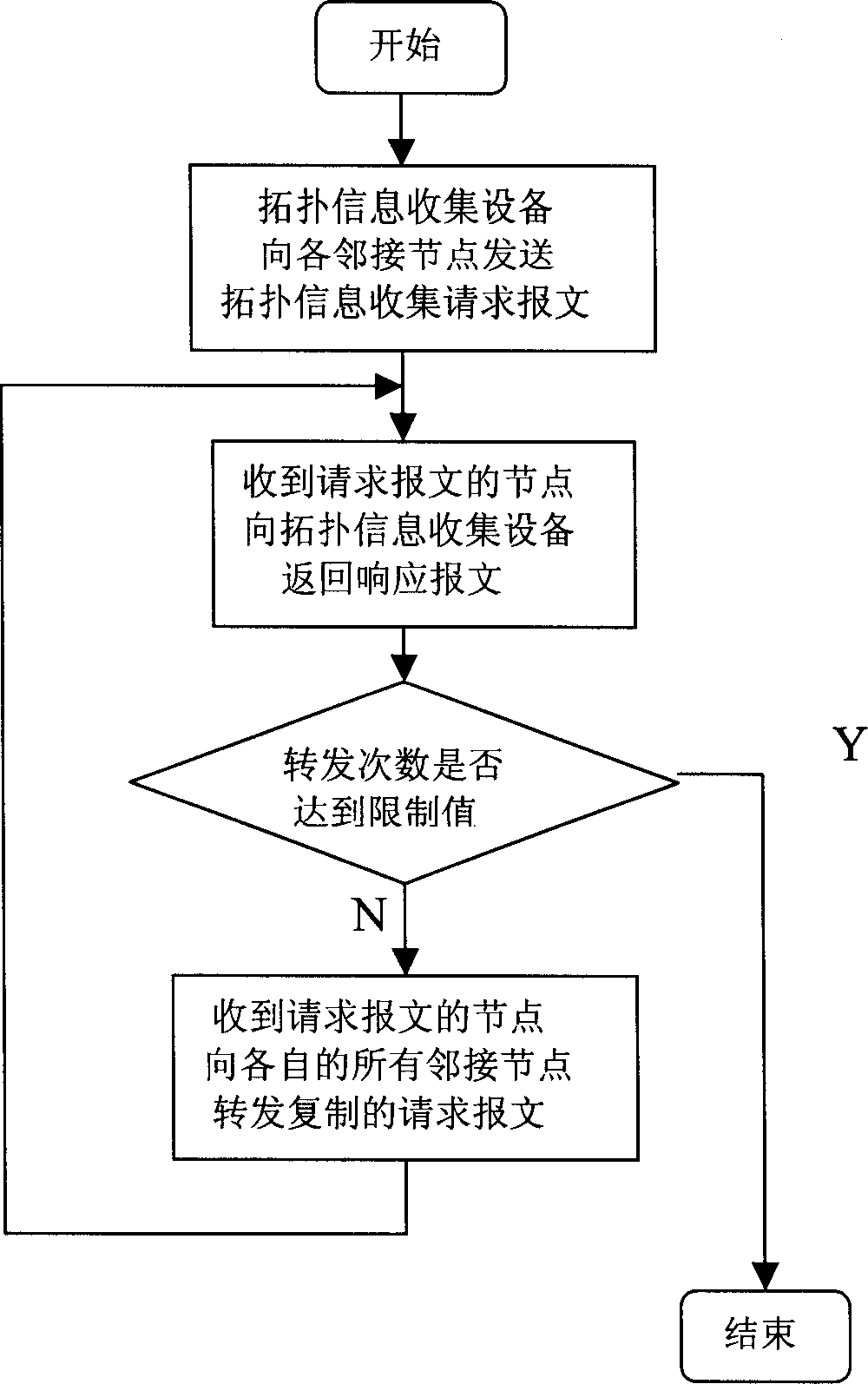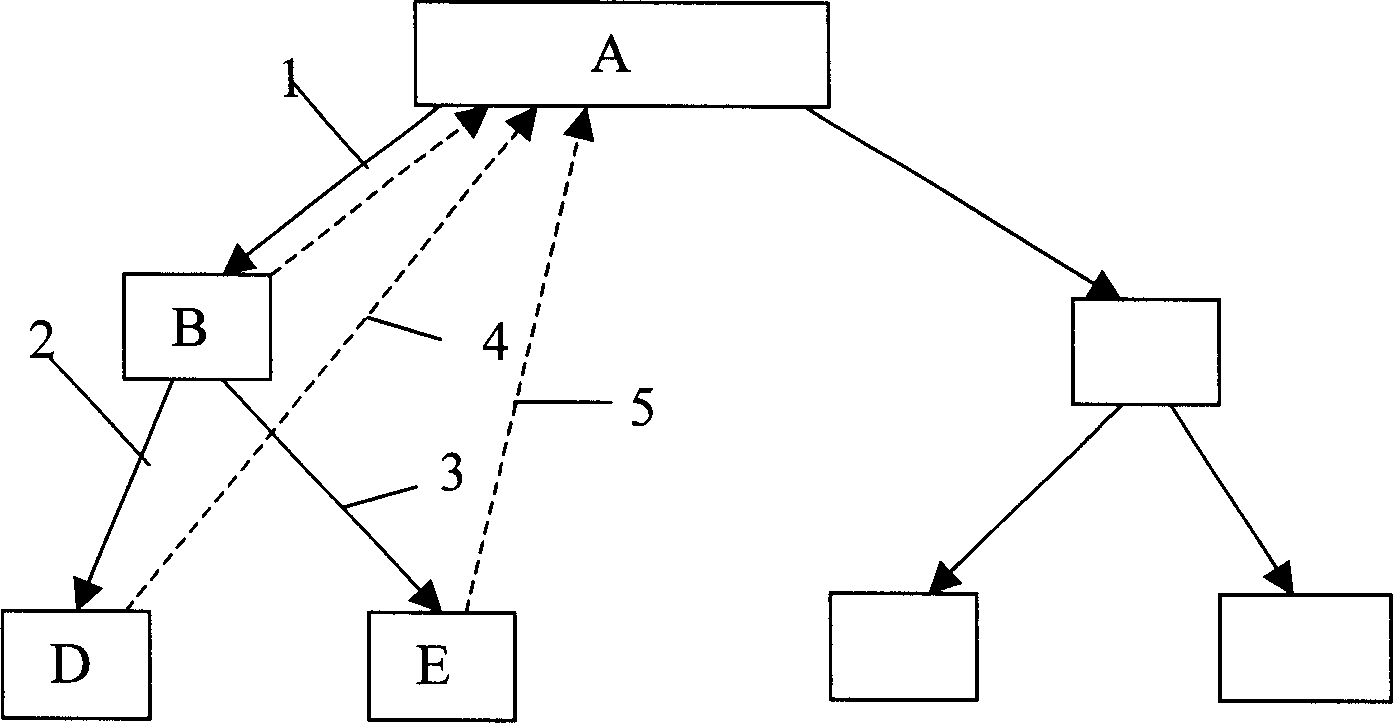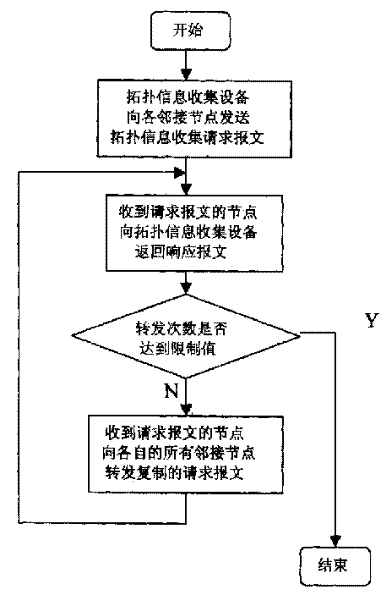Network topology information acquisition method
A technology of network topology information and topology information, which is applied in the field of network topology information collection, and can solve problems such as management loopholes, failure of network devices to join clusters, and impossibility of implementation
- Summary
- Abstract
- Description
- Claims
- Application Information
AI Technical Summary
Problems solved by technology
Method used
Image
Examples
Embodiment Construction
[0015] The method of the present invention will be further described below in conjunction with the accompanying drawings and embodiments.
[0016] figure 1 The process shown is as follows: first, the topology information collection device sends a topology information collection request message from the local node to the adjacent node according to its adjacent node information. The request message contains a field for limiting the number of message forwarding times, and the following steps are repeated: operate:
[0017] The node receiving the request message returns a response message containing the information of the node and the connection information between the node and the adjacent node to the topology information collection device;
[0018] Determine whether the number of packet forwarding times reaches the limit value, if yes, end the operation; if not, continue the following processing;
[0019] The node that receives the request message forwards the request message ...
PUM
 Login to View More
Login to View More Abstract
Description
Claims
Application Information
 Login to View More
Login to View More - R&D
- Intellectual Property
- Life Sciences
- Materials
- Tech Scout
- Unparalleled Data Quality
- Higher Quality Content
- 60% Fewer Hallucinations
Browse by: Latest US Patents, China's latest patents, Technical Efficacy Thesaurus, Application Domain, Technology Topic, Popular Technical Reports.
© 2025 PatSnap. All rights reserved.Legal|Privacy policy|Modern Slavery Act Transparency Statement|Sitemap|About US| Contact US: help@patsnap.com



